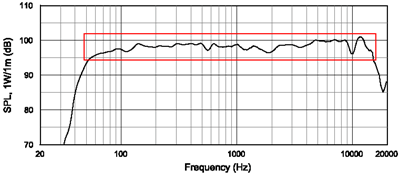Jim Warren van AnandTech komt ons vandaag verblijden met een heldere guide over speakers. Alle belangrijke begrippen uit de audiowereld worden besproken en uitgelegd, zodat je met een gerust hart naar een verkoper in een audiozaak durft te stappen. Begrippen die onder andere bespoken worden zijn de frequentie response, de geluidssterke en alle soorten surround sound. Hieronder een stukje over de frequentie response:
A much more clear method of specifying frequency response involves giving a tolerance, the range within which the speaker produces all of the frequencies within its frequency response range. For example, a frequency response of 20 Hz to 20 kHz +/- 3 dB indicates a much superior speaker to the one mentioned earlier with a bass roll off of 40 dB. Basically, the latter speaker maintains its level all the way into its lowest frequency, while the former just goes away (rolls off) in its lower frequencies. The lowest bass frequency is at most only half of what a typical mid range frequency is reproduced at. Without indicating the tolerance on the specifications, companies can create extremely misleading specifications.
Specifications given in figure 2 could indicate that this speaker responded from 35 Hz to 20 kHz—it reads on the diagram across that entire spectrum. However, the red box indicates what frequency range would be offered with a tolerance of roughly +/- 5 dB, or a range of roughly 50 Hz to ~17kHz. Both specifications would be true, but only the second one would be very honest.
If a speaker company will not indicate a tolerance in their specifications, it raises the question of what they are trying to hide. In addition to indicating how the ends of the frequency spectrum, the tolerance indicates the accuracy of the spectrum. The tolerance indicates that at no point in the spectrum are there extreme spikes or discrepancies that would not show up in a spec without a tolerance reading. Each speaker has its own frequency response that gives it “color,” a speaker’s individual tonal qualities or sound. This characteristic determines how the frequency response shapes the sound to make it better by emphasizing certain frequencies.

